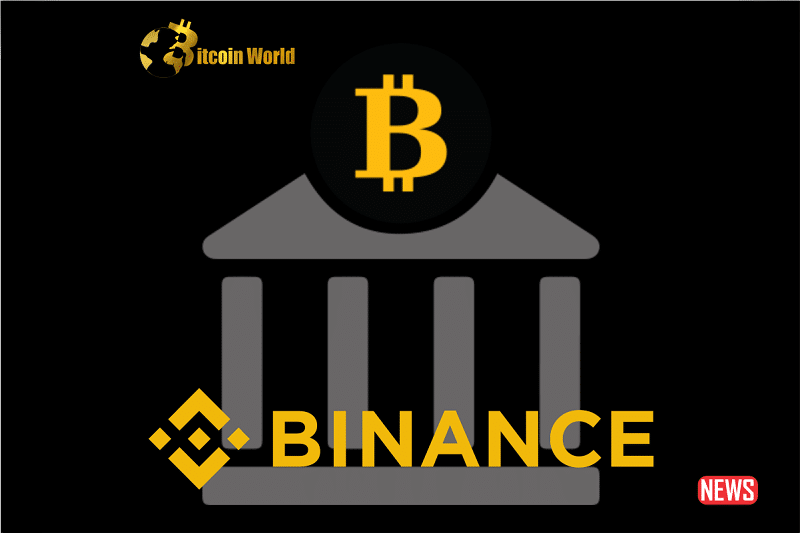Imagine sending cryptocurrency directly to a bank account, seamlessly bridging the gap between the digital and traditional financial worlds. For many in Latin America, this isn’t just a dream anymore. Crypto giant Binance is making significant strides in the region, and their latest move is a game-changer. Let’s dive into how Binance is tackling economic challenges head-on with its new crypto-to-bank service.
What’s the Buzz About Binance’s New Offering?
On August 30th, Binance unveiled “Send Cash,” a new feature designed to make crypto more accessible and practical in Latin America. This isn’t just another feature launch; it’s a strategic move to address the unique financial landscape of the region. Through collaborations with licensed transfer processing providers, Binance is enabling users to directly transfer cryptocurrency funds to their traditional bank accounts.
Currently, “Send Cash” is available in these nine Latin American nations:
- Colombia
- Honduras
- Guatemala
- Argentina
- Costa Rica
- Paraguay
- Dominican Republic
- Panama
- Mexico
How Does “Send Cash” Actually Work?
Think of it as a direct crypto pipeline to your bank. Binance leverages its existing crypto payment platform, Binance Pay, to facilitate these transfers. Specifically, users in the nine listed countries can send funds to bank accounts located in Colombia and Argentina. Binance Pay has already proven its mettle in other parts of the world, gaining traction in Africa, Asia, and Eastern Europe.
Why is This Such a Big Deal for Latin America?
Min Lin, Binance’s Regional VP for Latin America, perfectly encapsulates the significance of this move: Binance is committed to creating crypto use cases that fit into everyday life. And in Latin America, there’s a real need for innovative financial solutions.
The Underserved and the Underbanked
Consider this: a 2021 World Bank study revealed that a staggering 42% of adults in Latin America don’t have a bank account. That’s a significant portion of the population excluded from traditional financial services. Crypto, with its lower barriers to entry, offers a potential alternative. “Send Cash” directly addresses this by allowing crypto holders to access traditional banking services more easily.
Battling Inflation with Crypto
Many Latin American countries are grappling with high inflation rates. This erodes the purchasing power of traditional currencies, making people look for alternative ways to store and transfer value. Cryptocurrencies, while volatile, are increasingly seen as a hedge against inflation and a more efficient means of sending remittances.
| Country | Inflation Rate (Illustrative) |
|---|---|
| Venezuela | Very High |
| Argentina | High |
| Colombia | Moderate |
| Haiti | Moderate |
| Cuba | Moderate |
*Note: These are illustrative examples based on the provided text and may not reflect the most up-to-date figures.
What are the Benefits of “Send Cash”?
- Increased Accessibility: Bridges the gap between crypto and traditional banking for the underbanked.
- Faster Transactions: Crypto transfers can often be faster than traditional international money transfers.
- Potentially Lower Fees: Depending on the providers, crypto transfers can sometimes offer more competitive fees.
- Greater Control: Users have more direct control over their funds.
- Financial Inclusion: Opens up new financial avenues for individuals who may have been excluded before.
Are There Any Challenges?
While “Send Cash” presents significant opportunities, there are also challenges to consider:
- Regulatory Uncertainty: Cryptocurrency regulations vary across Latin American countries, creating a complex landscape.
- Volatility: The price fluctuations of cryptocurrencies can be a concern for users.
- Adoption Hurdles: Educating the public about cryptocurrency and its benefits is crucial for wider adoption.
- Recent Setbacks: The recent suspension of Binance’s crypto debit card services in the region highlights the potential for unforeseen challenges.
The Debit Card Suspension: A Bump in the Road?
It’s worth noting that just a week before this announcement, on August 24th, Binance suspended its crypto debit card services in Latin America. This serves as a reminder that the journey of integrating crypto into the financial system isn’t always smooth. However, the launch of “Send Cash” suggests a continued commitment to the region and a pivot towards different strategies.
What About Other Players in the Field?
Binance isn’t the only one making moves in the Latin American crypto space. On August 29th, Circle, the issuer of the popular stablecoin USD Coin (USDC), announced a partnership with Mercado Pago, a major fintech player in the region. This collaboration will bring USDC to the Chilean market through Mercado Pago’s platform, further demonstrating the growing interest and activity in the LATAM crypto ecosystem.
Looking Ahead: What Does This Mean for the Future?
Binance’s “Send Cash” initiative is a significant step towards bridging the gap between the crypto world and traditional finance in Latin America. By addressing the specific economic challenges and the needs of the underbanked, Binance is positioning itself as a key player in the region’s evolving financial landscape. While challenges remain, the potential for increased financial inclusion and more efficient money transfers is undeniable. The interplay between established players like Binance and emerging fintech solutions will likely shape the future of finance in Latin America for years to come.
Disclaimer: The information provided is not trading advice, Bitcoinworld.co.in holds no liability for any investments made based on the information provided on this page. We strongly recommend independent research and/or consultation with a qualified professional before making any investment decisions.


